8 top tips to crack down on volunteer oilseed rape
Tighter rotations as oilseed rape crops are tailored to a high-input, high-output model could be responsible for an increase in the number of volunteer plants appearing in subsequent crops.
Cracking down on the causes of volunteer plants will help maintain yields and keep disease levels in following rapeseed crops down.
Sarah Cook, Adas research scientist, explains that although volunteer plants aren’t the biggest problem oilseed rape growers face at present, it will help to produce crops of consistent yield and quality.
See also: Lincolnshire estate rethinks crop rotations to push up wheat yields
“Growers have a lot to be concerned about at the moment, particularly in finding strategies to manage cabbage stem flea beetle.
“However, in light of these issues, the last thing growers need is decreased yields and poorer quality because of oilseed rape volunteers.”
Minimising seed shedding is the best way to rid crops of volunteer oilseed rape plants. Here we list eight top tips for preventing early seed shedding and volunteer plants from emerging.
1. Lodging
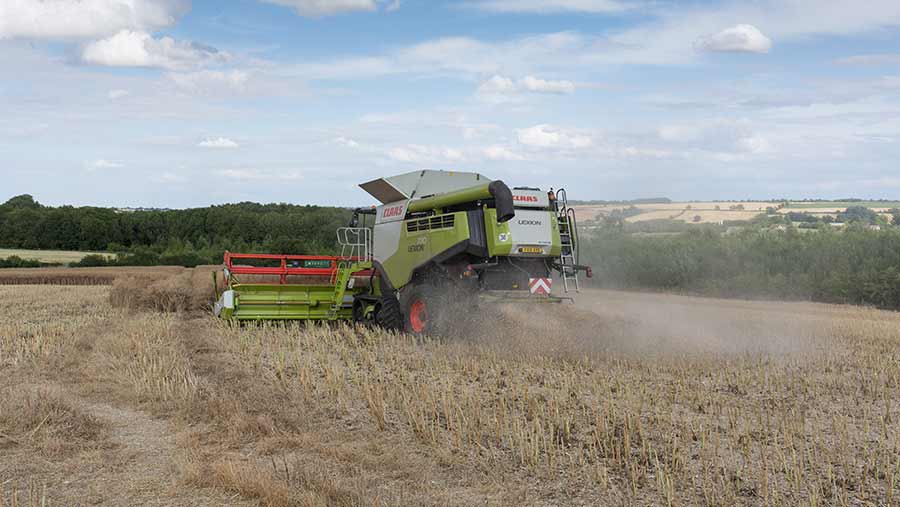
© Tim Scrivener
Lodged crops are at greater risk of premature pod shatter. Dr Cook says volunteer plants will potentially increase the plant population beyond the optimum.
“As volunteers aren’t accounted for in seed rates, this can lead to serious problems in the crop. A higher plant population due to volunteers could increase the lodging risk.”
Stem canker will increase lodging, so stay on top of phoma outbreaks and select a variety with good resistance to the disease.
2. Timing

© Tim Scrivener
Timing desiccation and harvest to make sure the crop doesn’t overripen is key to preventing seed shedding.
Carefully check a representative sample of the pods within the crop and have a contingency plan in place if you need to delay harvest.
If you need to wait, then wait.
3. Environment

© Photofusion/REX/Shutterstock
If possible, avoid growing oilseed rape on very light soils, as this can cause premature ripening and early pod shatter.
Seed shedding is also more likely to happen in crops that are on exposed, windy sites, so try to avoid varieties prone to seed shedding on this soil type.
4. Sealants
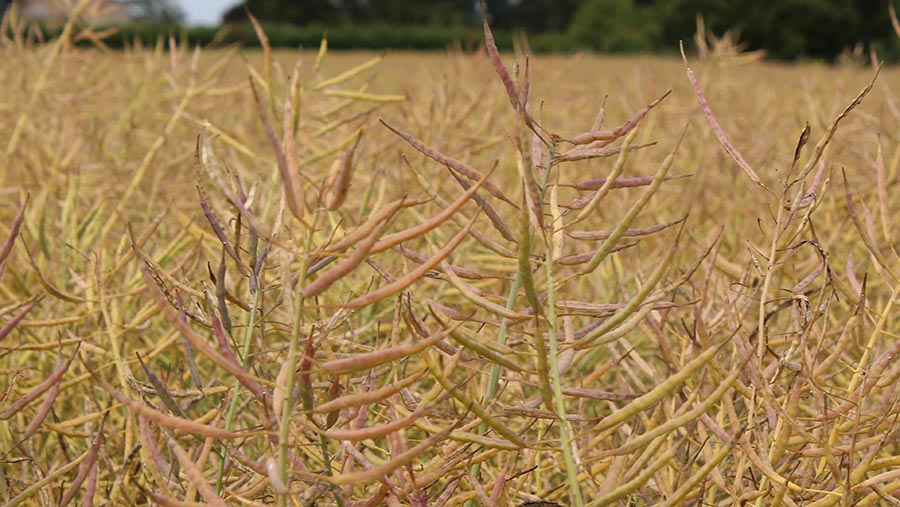
When growing oilseed rape in an environment not ideal for the crop, use pod sealants to protect against seed shedding.
There are a variety of sealant options out there, with some able to be applied early and then expand as the pod grows.
Earlier pod sealant applications can help to reduce losses when the time comes to apply a desiccant spray before harvest, with pods less likely to shatter as the sprayer passes through.
5. Cultivation

©Tim Scrivener
Delay cultivation for as long as possible before the next crop to allow the predation of seeds that have been dropped during harvest.
6. Rotations
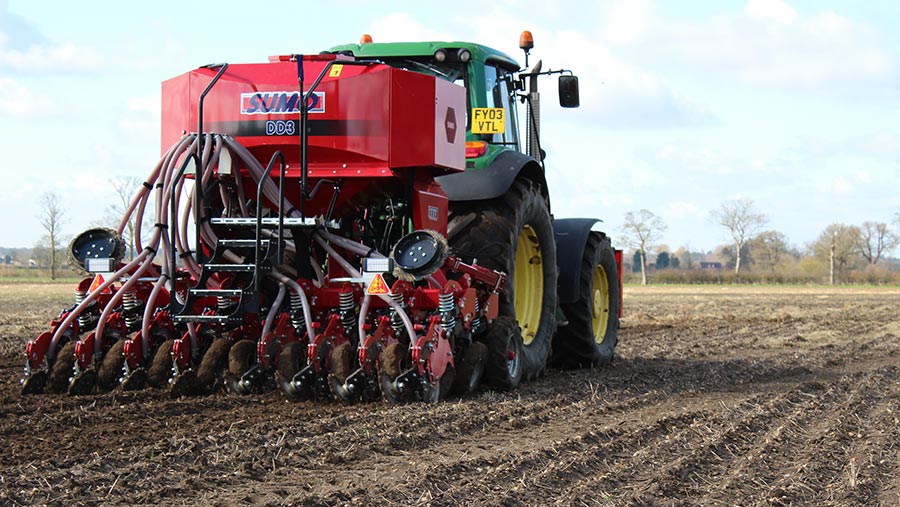
Short rotations and overreliance on oilseed rape as a break crop will increase the number of volunteers.
Ask yourself if your current rotation is the best option for long-term sustainability and consider widening the farm rotation with spring crops, for example.
7. Consider certified hybrid seed
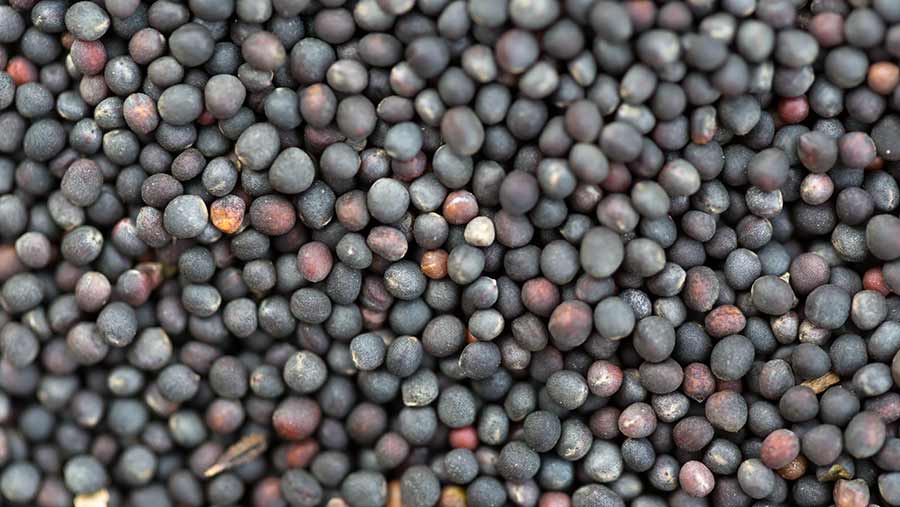
© Tim Scrivener
Bayer’s seeds product manager Sarah Middleton says growers need to be wary of the risk of volunteers that comes with farm-saved seed.
One of the main attractions of conventionals is the ability to home-save seed and cut costs as a result.
“By planting farm-saved oilseed rape, growers are depending on a crop that is unpredictable and limiting the output potential of that crop.”
Mrs Middleton believes this could exacerbate any volunteer problem, with there in effect being two volunteer populations: one already in the field, and the second planted in the farm-saved seed crop.
“If growers are worried about unpredictability in their oilseed rape, they should choose certified seed, preferably a quality hybrid,” she adds.
8. Adjust seed rates
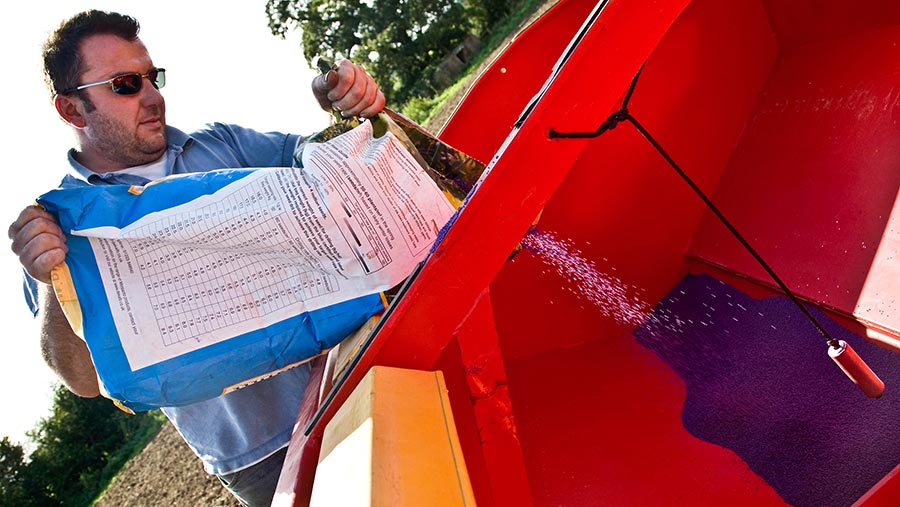
If you have problems with volunteers, you may need to adjust your seed rates. Dr Cook says the optimum plant population for oilseed rape is 30 plants/sq m.
Volunteer plants have the potential to push the plant population above the optimum, resulting in yield losses from lodging and canopies that are too dense.
“The main issue is that an overlarge canopy can decrease yield by increasing light reflectance, thereby reducing the number of seeds/pod. Ultimately this will result in the crop not reaching its full yield potential.”

